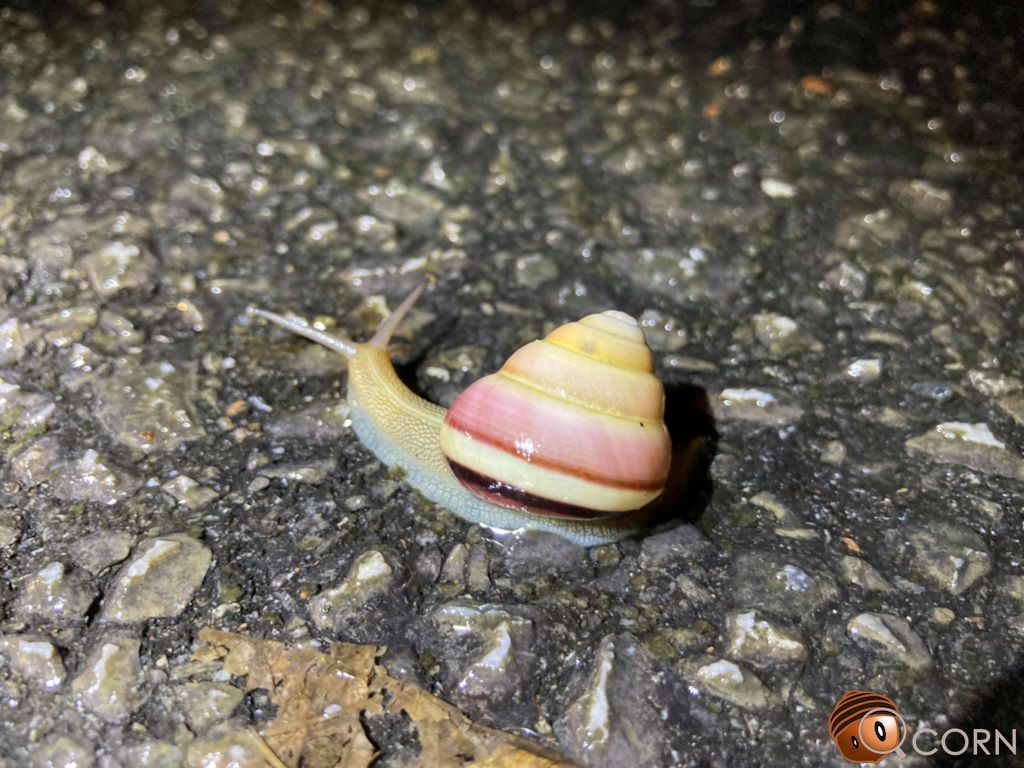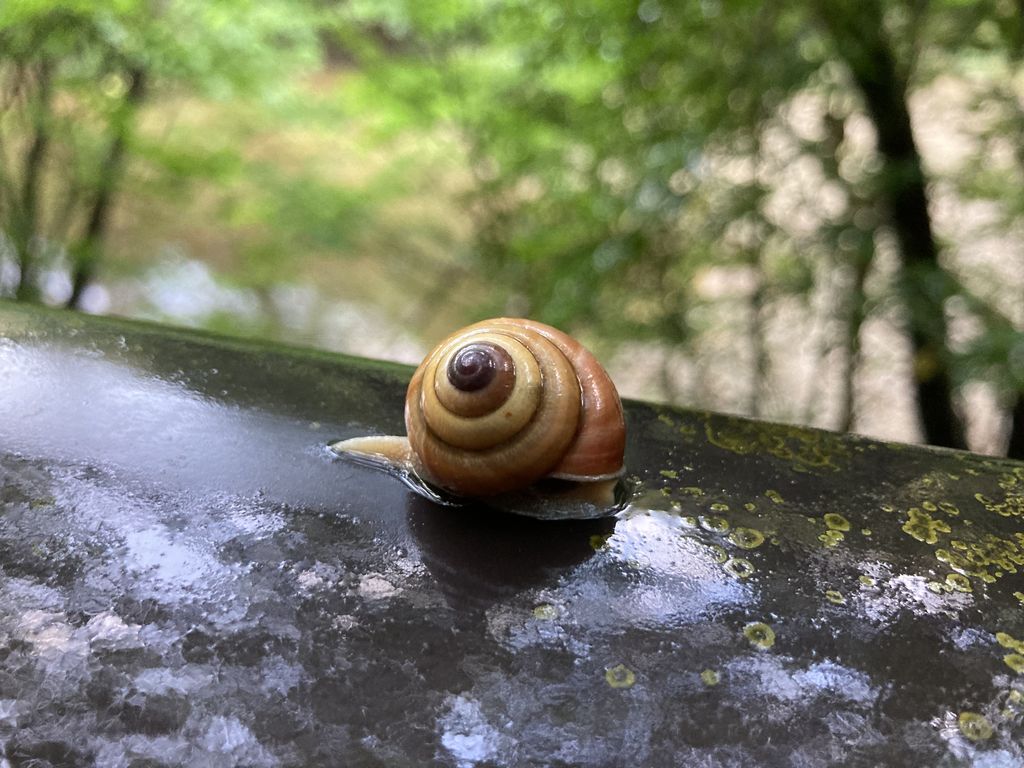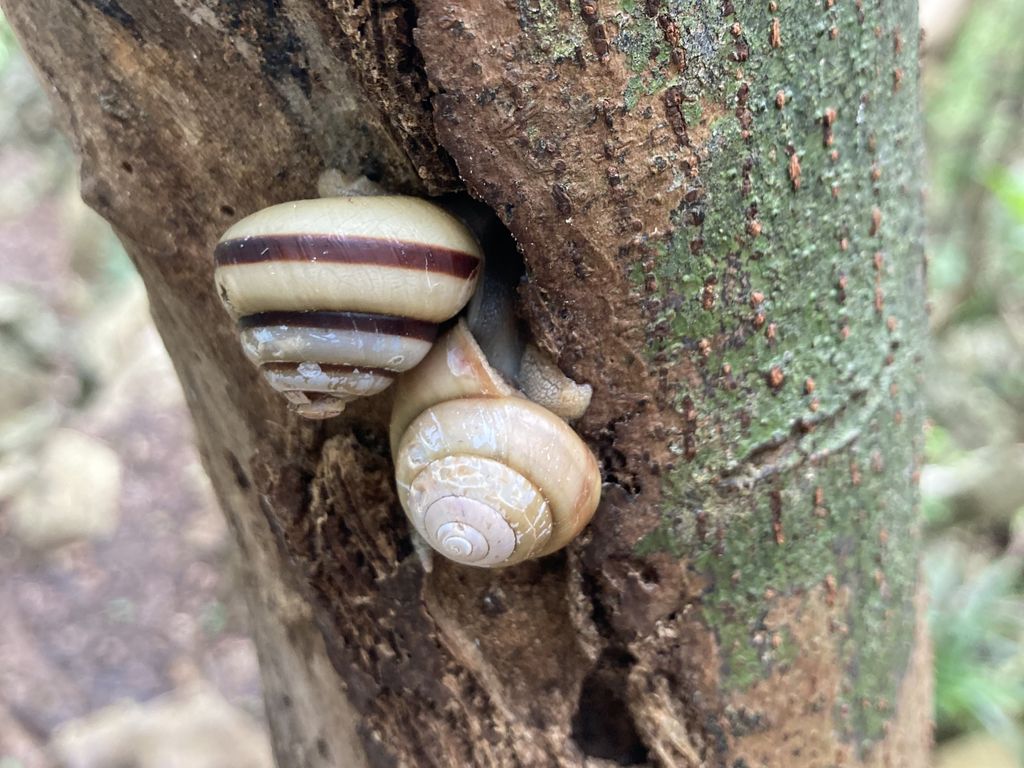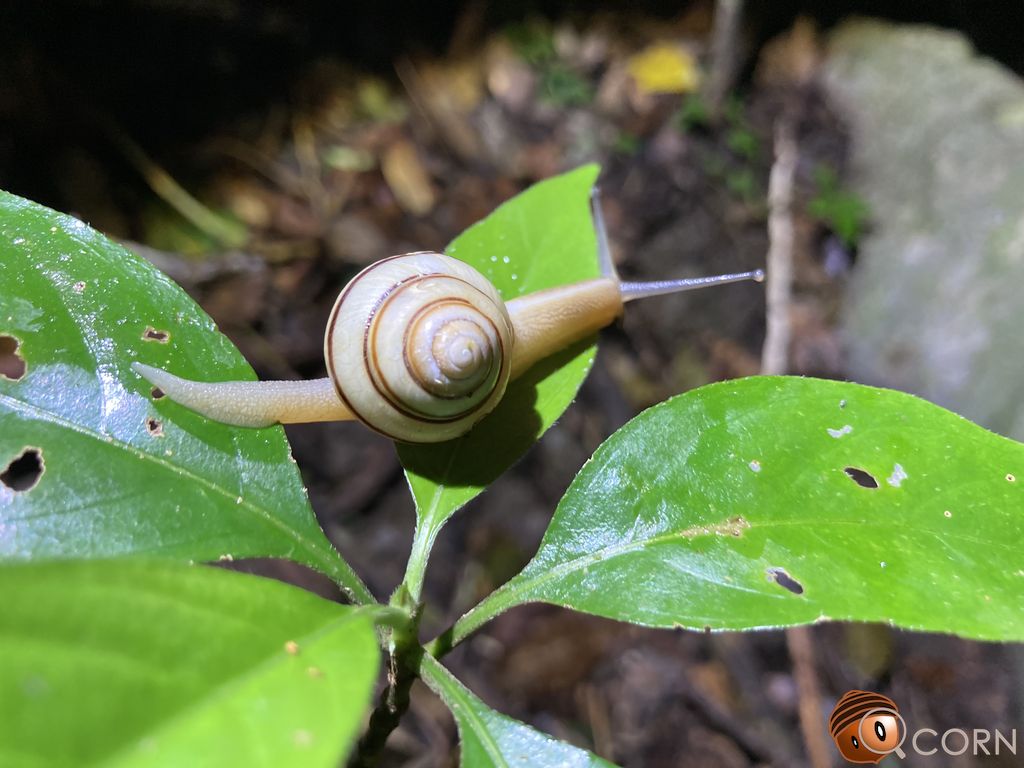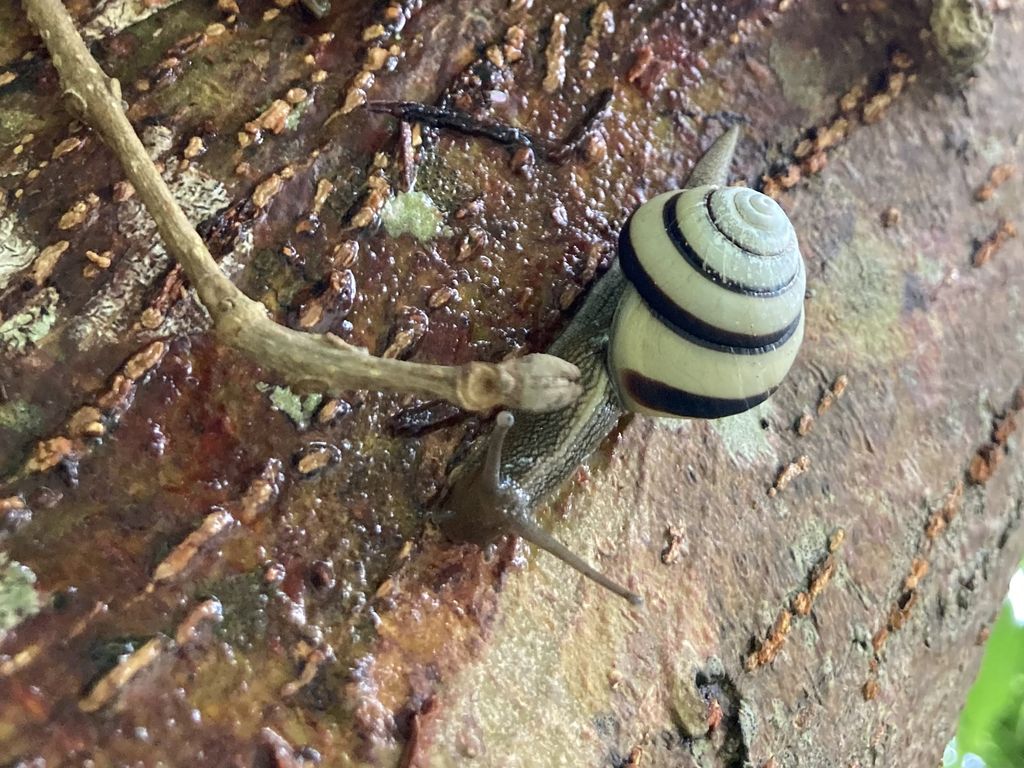Satsuma eucosmia eucosmia
Japanese name: オキナワヤマタカマイマイ (ヤンバルヤマタカマイマイ)
Chinese name: 沖繩高腰蝸牛
English name: Satsuma eucosmia
Origin: Okinawa Islands (Okinawajima, Iejima, Sesokojima, Tsukenjima, etc.). A different subspecies is found on Okinoerabujima in Kagoshima Prefecture.
Among the arboreal species of the genus Satsuma distributed in the Okinawa Islands, the following are relatively common on Okinawajima:
- Satsuma largillierti シラユキヤマタカマイマイ
- Satsuma eucosmia
- S. e. erabuensis オキノエラブヤマタカマイマイ – endemic subspecies on Okinoerabujima
- S. e. eucosmia オキナワヤマタカマイマイ
- S. e. ssp. (?) ヤンバルヤマタカマイマイ (?)
Satsuma eucosmia shows significant color variation. The species name “eucosmia” means “beautiful ornamentation,” and individuals can range from pink, brown, to white shells with black spiral patterns.
Aside from S. e. erabuensis, the classification of the remaining populations is still under debate. Some researchers suggest that populations south of Onna Village with relatively flatter shells should be referred to as S. e. eucosmia, while more reddish and taller-shelled populations may represent a distinct subspecies, S. e. ssp. However, this classification is not currently recognized officially.
On Okinawajima, some individuals of Satsuma largillierti and S. e. eucosmia have white and relatively flat shells, making them very difficult to distinguish by appearance alone. Literature states that identification is possible through genital morphology, but in the absence of such examination, one must rely on geographic distribution. Generally, S. largillierti is seen on the Motobu Peninsula, while S. e. eucosmia is more common south of Naha, although their distributions do overlap, making visual identification difficult.
Reference:
